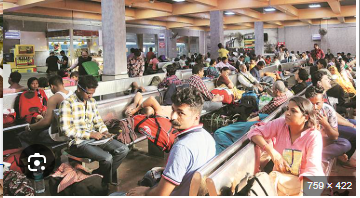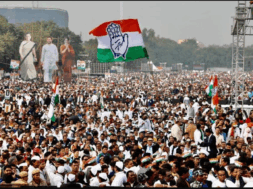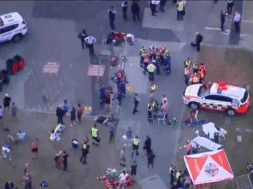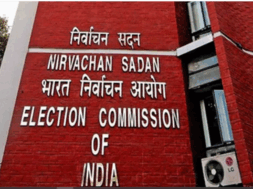
Railway Stations to Construct Waiting Areas to Restrict Unauthorised Entries to Platforms
NEW DELHI, Mar 7: In the aftermath of the stampede at the New Delhi railway station due to overcrowding during the Maha Kumbh Mela in Prayagraj, the railways have decided to construct permanent waiting areas outside 60 railway stations to deny access to platforms to unauthorised people.
The decision was taken at a high-level meeting chaired by Union Minister of Railways Ashwini Vaishnaw to discuss crowd control at railway stations held in New Delhi on Friday in the aftermath of the railway station stampede in which 18 persons were killed and dozens of others injured.
After the meeting, railway officials said it was decided to construct permanent waiting areas outside 60 stations. The decision was taken based on previous experience of creating waiting areas at stations such as New Delhi, Surat Udhna and Patna, which were able to hold large crowds. “During the festival season of 2024, waiting areas were created outside stations. Passengers were allowed inside only when the train arrived at the platform. Similar arrangements were made during the Maha Kumbh at nine stations of Prayagraj area,” officials said.
“Based on the experience at these stations, we have decided to create permanent waiting areas outside 60 stations across the country which periodically see heavy crowds,” officials said. Pilot projects have already been initiated at stations in New Delhi, Anand Vihar, Varanasi, Ayodhya, Patna, Gaya, Buxar, Prayagraj, Saharsa and Mumbai.
Officials further explained that the idea was to contain the crowd surge within the waiting area. It was also decided to initiate complete access-control at the 60 stations where only passengers with confirmed reserve tickets will be given direct access to the platforms. Passengers without a ticket or with a waiting list ticket will have to remain in the waiting area outside. Also, all unauthorised entry points will be sealed,” officials said.
In the meeting it was decided that all major stations will have a senior officer as Station Director. All other departments will report to the Station Director. “The Station Director will get financial empowerment so that he can take on-the-spot decisions for improving the station. The Station Director will be empowered to control the sale of tickets as per capacity of the station and the available trains,” officials said.
Officials also discussed two new designs of 12-metre-wide (40 feet) and six-metre-wide (20 feet) foot-over bridges (FOBs). “These wide FOBs with ramps were very effective in crowd management during the Maha Kumbh. These FOBs of new standard will be installed in all the stations,” officials said.
In order to better monitor crowds, it was decided to install cameras in the adjoining areas of the selected stations. Apart from this, it was decided to establish war-rooms at large stations, where officers of all departments will work during instances of crowding. “Also, latest digital communication equipment like walkie-talkies, announcement systems, and calling systems will be installed on all crowded stations,” officials said.
For staff and service personnel, newly designed uniforms will be issued so that they can be easily identified during a crisis situation. They will also be given an identity card of new design so that only authorised persons can enter the station.
(Manas Dasgupta)














